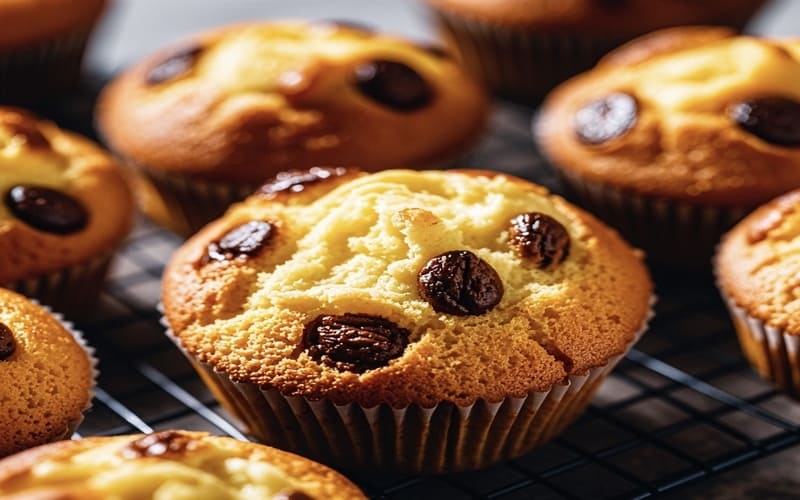Baking is both an art and a science, requiring precision, patience, and the right tools. Among these tools, the baking pan is indispensable. However, many bakers find themselves frequently replacing their baking trays due to a variety of issues.
Understanding the factors that contribute to the shortening of a baking pan’s lifespan can help in making better purchasing decisions and in maintaining these pans properly. This article explores the common factors affecting the lifespan of baking trays, the problems they cause, and how high-quality bakeware can provide a solution.
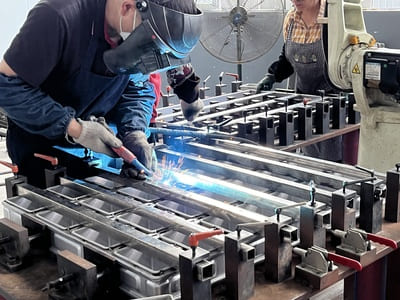
Factors Affecting the Lifespan of Baking Pans
- Frequent Temperature Changes
Baking involves subjecting pans to high temperatures repeatedly, often followed by rapid cooling. This constant thermal cycling can lead to the weakening of the pan material over time.
- Thermal Stress: Every time a baking pan goes from the hot oven to a cooler environment, the material expands and contracts. This expansion and contraction can cause micro-cracks, which may not be visible initially but will grow over time, leading to structural weakness and eventual failure.
- Material Fatigue: Repeated heating and cooling cycles can lead to material fatigue. Metal baking trays, for example, may become brittle and more prone to warping or breaking due to the constant stress.
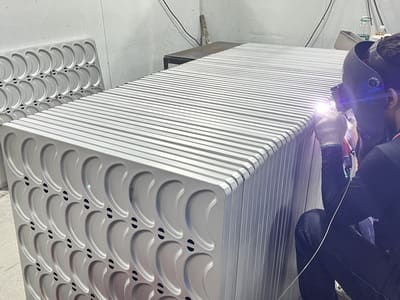
- Excessive Wear and Tear
Regular use of baking sheet trays inevitably leads to wear and tear. However, excessive wear can significantly shorten the pan’s usable life.
- Surface Scratches: Cutting or scraping food directly on the baking pan can leave scratches. These scratches not only degrade the appearance of the pan but also create grooves where food can stick and bacteria can hide.
- Impact Damage: Dropping or banging pans can cause dents and deformations, which affect how evenly heat is distributed during baking. This can result in unevenly cooked food and hot spots that burn food.
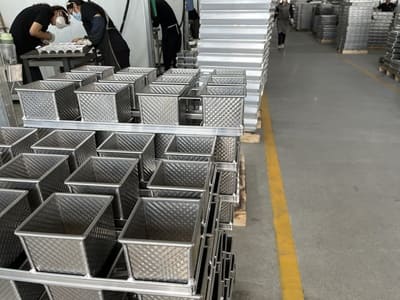
- Improper Cleaning Practices
How you clean your baking sheet pans can have a big impact on their longevity.
- Harsh Cleaners: Using strong, abrasive cleaners can damage the surface of the pan. These cleaners can strip away non-stick coatings and corrode metal, leading to rust and other forms of degradation.
- Rough Scrubbing: Scrubbing with steel wool or other abrasive pads can leave scratches and damage the surface. This makes it easier for bread to stick and for bacteria to grow, necessitating more frequent replacements.
Problems Caused by These Factors
- Shortened Lifespan
The more quickly a baking pan deteriorates, the more often it needs to be replaced. This not only increases costs but also results in more waste, which is environmentally unfriendly.
- Increased Costs: Frequent replacement of baking sheet pans can add up, especially for commercial bakers who rely on high volumes of pans. Investing in lower-quality pans might seem economical at first, but the frequent need for replacements can make them more expensive in the long run.
- Environmental Impact: The production and disposal of baking trays have environmental consequences. Reducing the frequency of replacements can help minimize waste and reduce the carbon footprint associated with manufacturing and transporting new pans.
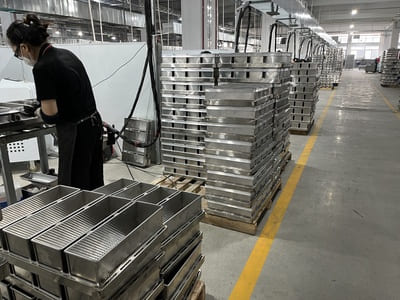
- Compromised Baking Results
A damaged or worn-out baking pan can negatively affect your baking outcomes.
- Food Adherence: Scratches and wear on the pan’s surface can cause bake products to stick, making it difficult to remove baked goods without breaking them. This can be particularly frustrating when baking delicate items like cookies, muffins, or pies.
- Uneven Baking: Warped or damaged pans can cause uneven heat distribution, leading to inconsistent baking results. Some parts of your food may be overcooked while others remain undercooked.
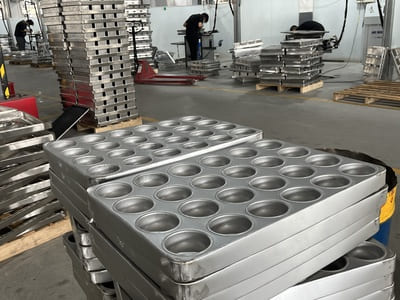
- Difficult Cleaning
Improper cleaning methods not only damage the pan but also make future cleaning more difficult.
- Residual Stains: Over time, improper cleaning can lead to persistent stains and residues that are difficult to remove. These residues can affect the flavor and appearance of your baked goods, such as bread, cakes, or quiche.
- Bacterial Growth: Scratched and damaged surfaces can harbor bacteria, making it harder to keep your pans sanitary. This is especially concerning in a commercial setting where food safety is paramount.
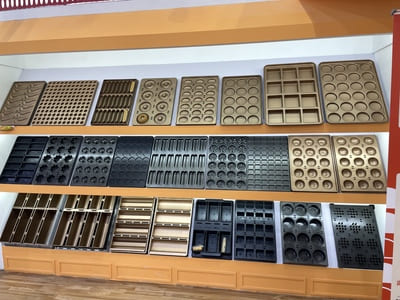
Benefits of Baking Trays
Investing baking trays can mitigate many of the issues mentioned above. Here are some key advantages:
- Durable Materials
Baking cookie pans are often made from materials that can withstand frequent temperature changes without degrading.
- Thermal Resistance: Premium pans are designed to handle thermal stress better, reducing the risk of warping or cracking. Materials like heavy-duty aluminum or stainless steel can offer excellent heat conductivity and resistance to thermal fatigue.
- Longevity: Durable materials mean that your pans will last longer, even with frequent use. This translates to cost savings over time as you won’t need to replace them as often.

- Wear-Resistant Coatings
Many pans come with special coatings that make them more resistant to wear and tear.
- Non-Stick Surfaces: Advanced non-stick coatings reduce the likelihood of food sticking to the pan. This not only makes baking more enjoyable but also makes cleaning easier and reduces the need for harsh scrubbing.
- Scratch Resistance: Some pans feature scratch-resistant coatings that protect the surface from damage, ensuring a longer lifespan and maintaining their appearance and functionality.
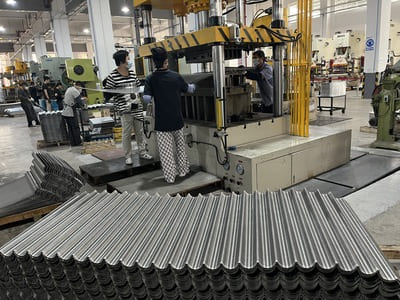
- Easy Cleaning
Bakery pans are designed with cleaning in mind.
- Smooth Surfaces: A smooth, non-porous surface makes it difficult for food to stick and bacteria to grow. This makes cleaning quicker and more effective, even without the use of harsh chemicals.
- Dishwasher Safe: Many premium pans are dishwasher safe, which saves time and effort. However, always check the manufacturer’s instructions to ensure the pan is suitable for dishwasher use.
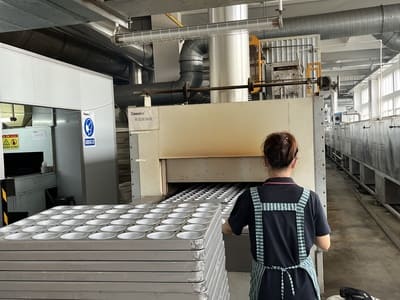
How to Choose the Right Baking Pan
When selecting a baking pan, consider the following factors to ensure you’re getting a product that will stand the test of time:
- Material
Look for pans made from durable materials like heavy-duty aluminum, stainless steel, or high-grade silicone. These materials are known for their heat conductivity and resistance to warping and corrosion.
- Coating
Opt for pans with reliable non-stick coatings that are PFOA-free. Ensure the coating is scratch-resistant and can withstand high temperatures without degrading.
- Thickness
Thicker pans tend to be more durable and resistant to warping. They also provide better heat distribution, which is crucial for even baking.
- Brand Reputation
Choose products from reputable brands known for their quality and customer service. Reading reviews and seeking recommendations can also help in making an informed decision.
- Care Instructions
Follow the manufacturer’s care instructions to maximize the lifespan of your baking pan. This often includes recommendations for cleaning and storage.
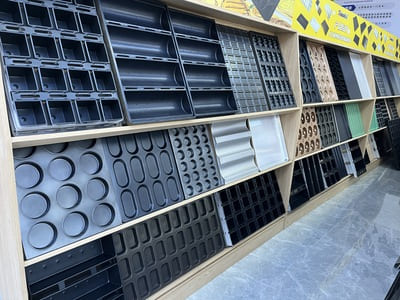
Conclusion
Understanding the factors that affect the lifespan of bakery pans can help you make better choices in both purchasing and maintenance. While cheaper bakeware might seem cost-effective initially, investing bakeware can save money and hassle in the long run.
High-quality baking bakery pans not only last longer but also provide better baking results and easier maintenance. By choosing durable materials, reliable coatings, and following proper care practices, you can ensure that your baking pans remain in excellent condition, providing reliable support for all your baking endeavors.
Choose our premium baking pans and bakeware for a reliable, cost-effective, and enjoyable baking experience. With their superior durability, excellent performance, and ease of cleaning, our pans are designed to support you through countless baking adventures.
Whether you’re baking bread, cakes, muffins, cookies, or pies, our bakeware, pizza pans and accessories will help you achieve perfect results every time. Enter our website and get ready to add your cart or inquire the baking trays you need, bake with the best products we offer.

